In the last newsletter, we learned that adding fat to herbs or spices brings out their flavour. But the relationship between fat and flavour is not restricted to herbs or spices - most of the aromatic molecules that give flavour to food are soluble in fat. In short, cooking in fat helps disperse flavour molecules throughout food and on the tongue. It also makes them more available to travel to the olfactory receptors through the back of the mouth.
Read the first post about how fat contributes to flavour:
Or learn more about how flavour works:
In what other ways does fat influence flavour?
Besides being an important vector for flavour, fat helps create new flavours when combined with heat. In opposition to cooking with water, fat allows temperatures to rise higher where certain reactions occur (or are accelerated). While cooking food in water limits the maximum cooking temperature to 100 ºC — the temperature of boiling water, after which it evaporates -, fats can heat to higher temperatures without evaporating (although at a certain point they also degrade, hence why we avoid too high temperatures).
The Maillard reaction, for example, happens when heat stimulates chemical reactions between proteins and sugars in food, leading to browning and the creation of entirely new flavours. The caramelisation of sugars on the surface of food also happens only at high temperatures. While water present on the surface inhibits these reactions, coating a pan or the food with fat allows cooking temperatures to go higher.
At the same time, since fat forms a layer between food and the heat source, it prevents heat from unevenly reaching a specific part of the food (which may be in contact with the pan or closer to the heat source). When coated with fat, food is heated more uniformly, rather than quickly charring in certain spots, since the heat first spreads into the fat layer.
This is the case, for example, when adding food to a grill - a light coat of oil can protect the food’s surface from heating too quickly due to contact with the extremely hot surface of the grill. This would result in a burnt surface and an undercooked interior. Instead, fat gives the food time to cook evenly without charring too quickly (although a little char can add flavour too). Adding oil may sometimes be avoided for fatty ingredients, such as sausages or a cut of pork, but not for others, such as vegetables or lean meat.
It is still important to consider that, if the general temperature gets too high, the food will eventually burn too - maybe just more uniformly😅. In summary, on the one hand, fat allows heating and browning that may be prevented in foods with higher water content or cooked in water. On the other hand, it keeps drier foods from heating so fast that they immediately burn.
Some extra cooking tips
When cooking foods with high water content (e.g., zucchini or mushrooms), avoid overcrowding the pan or baking tray. If there is no space between pieces of food, the water that seeps out during cooking won’t be able to evaporate. Instead, it will stay trapped, and food will end up steamed rather than pan-fried or roasted, as all the water prevents the temperature from rising above 100 ºC. This will also influence the cooking process, as the overall cooking temperature will be lower.
Flavour is more than taste! Textures can also contribute to the perception of flavour, and cooking with fat helps create new textures, like crispiness, creaminess, and smoothness. In some instances, it can help food feel richer, which our brain interprets as desirable.
Fats also impart flavour to food, so choose your fat depending on the type of dish you are cooking. For example, you may choose a neutral fat if you want other flavours to be the centre of the show; or you may go for a strong-flavoured fat like sesame oil for its own intense flavour.
Adding spices early in cooking helps to disperse their aromas in the fat, which in turn helps disperse them throughout the dish. However, it is still important to consider that fats reach high temperatures and spices are small and dry, thus very sensitive to heat. Fry your spices for a short period at medium heat until aromatic before adding the remaining ingredients, or prepare a spiced oil to add on top of your food.
At the end of the day, you can cook without fat, but aromas may be toned down and some textures may be missing. Adding fat expands the flavour spectrum of your dishes. All of this doesn’t mean you should drench your dish in fat - too much fat can easily become overwhelming, not only in texture but also in flavour. Still, a little fat can go a long way in adding flavour to your cooking.
I hope this post inspires you to experiment a bit in the kitchen! Feel free to share it if you found something useful, and thank you for reading!
Or write your suggestions in the comments!





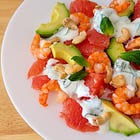
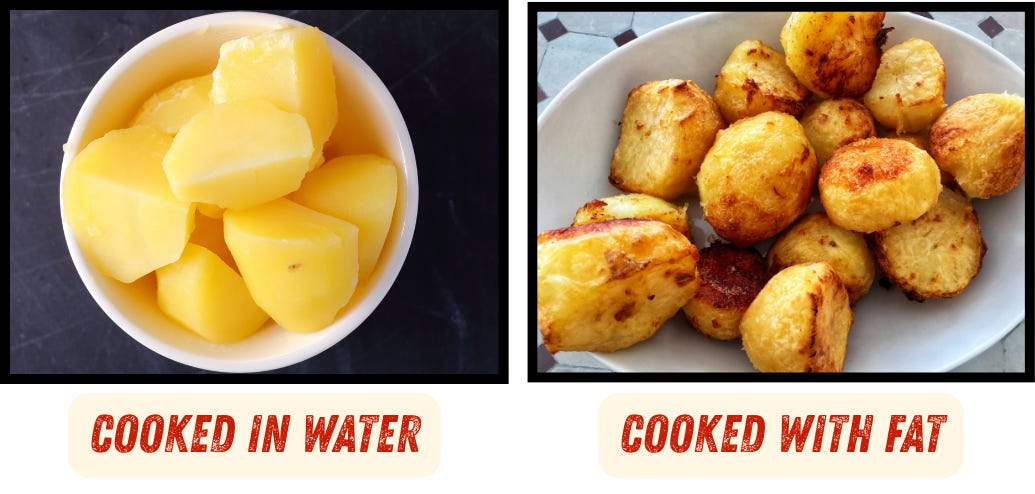
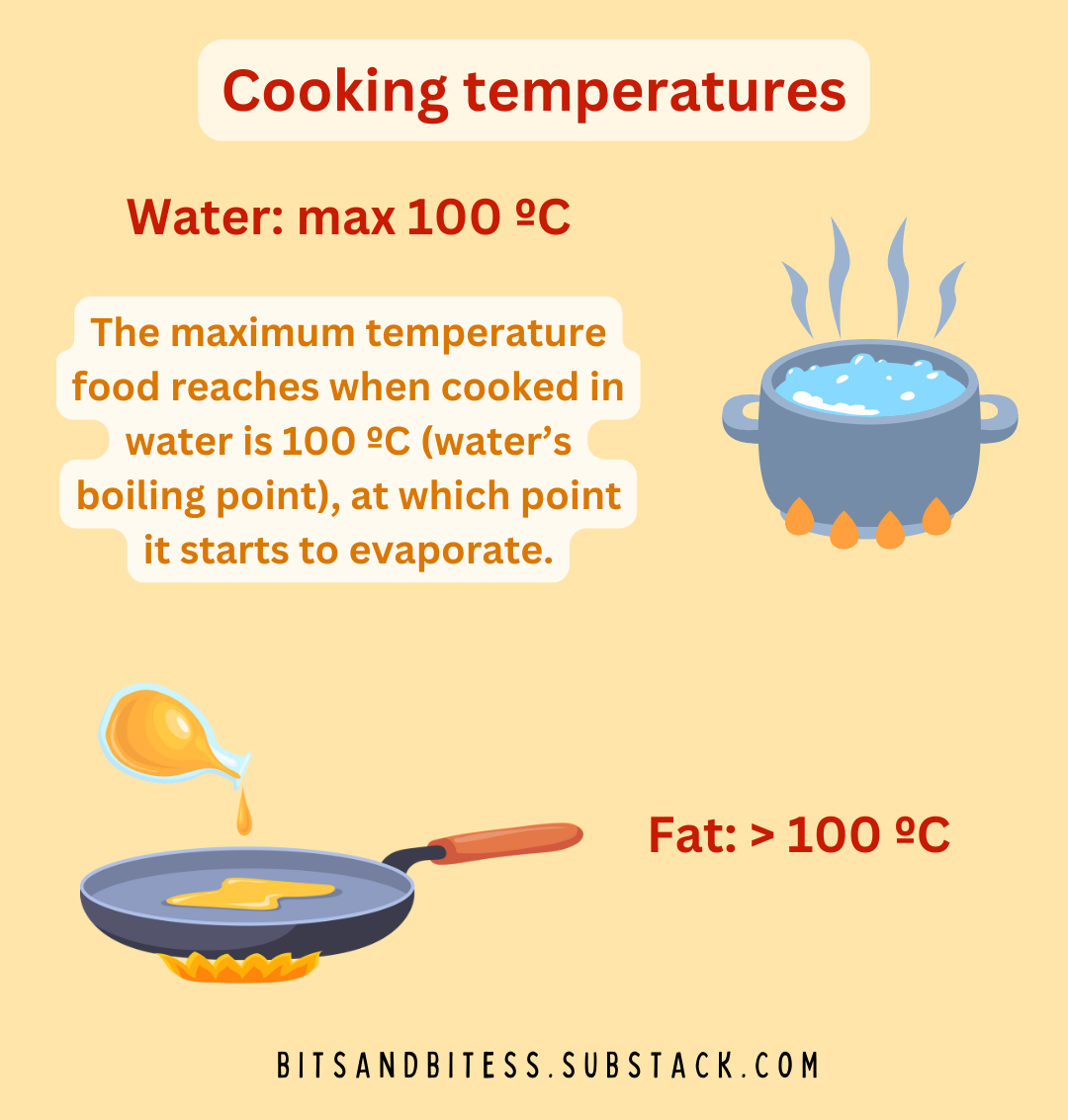
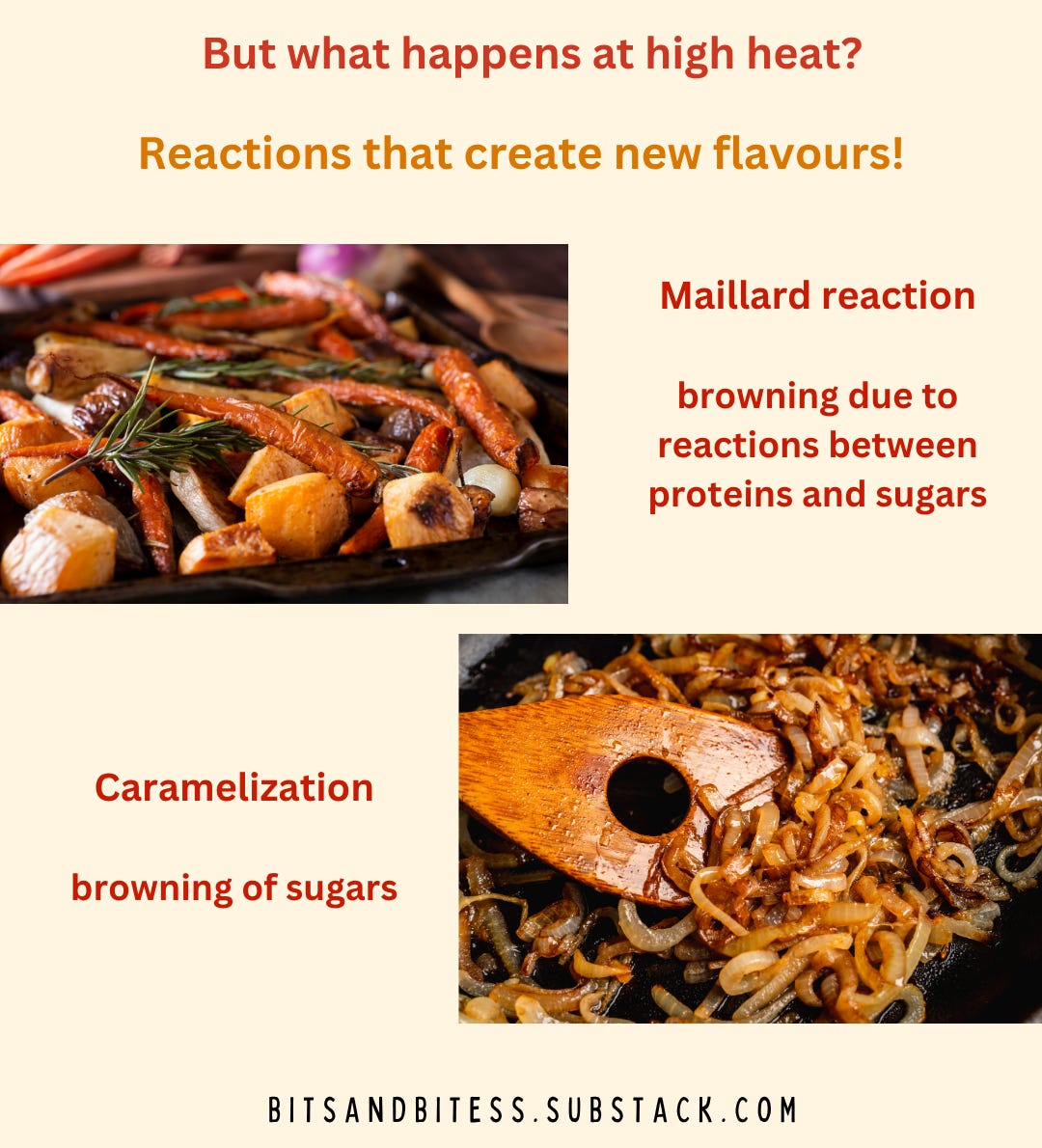
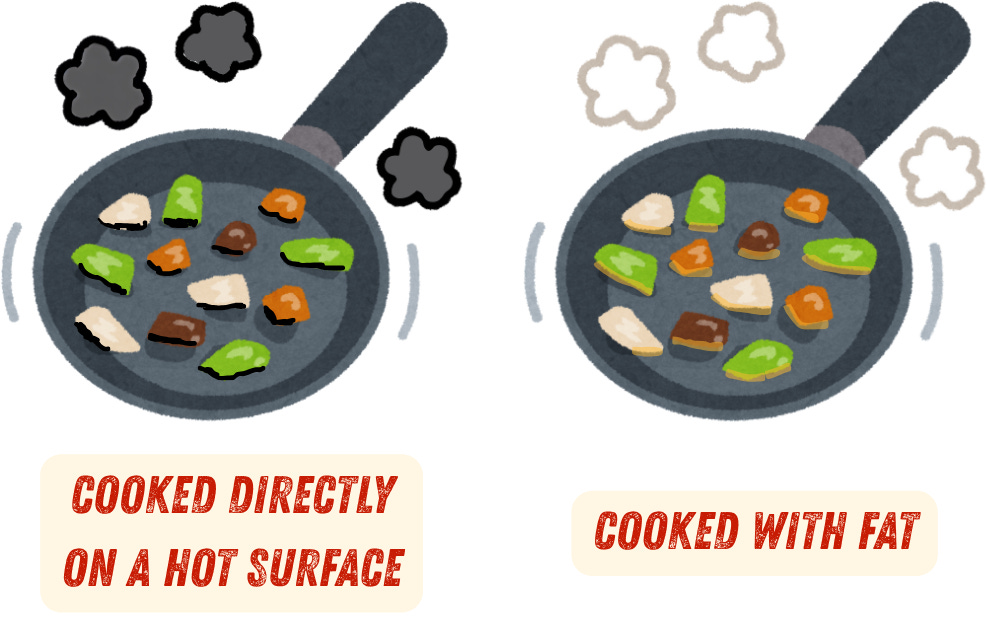
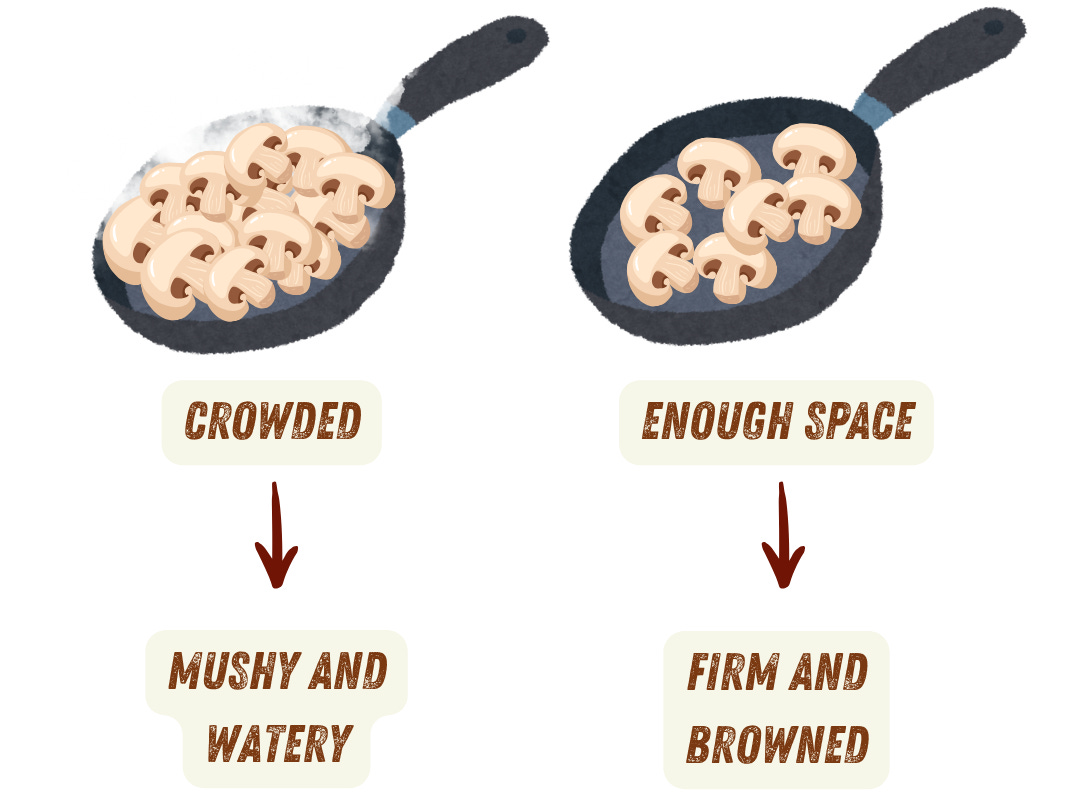

Excellent tips. Choosing a suitable pan or pot according to the nature of the recipe ingredients is an extremely important decision and something that does not get talked about enough. Your tip about cooking water-heavy vegetables like zucchini, mushroom and even bell peppers is bang on.